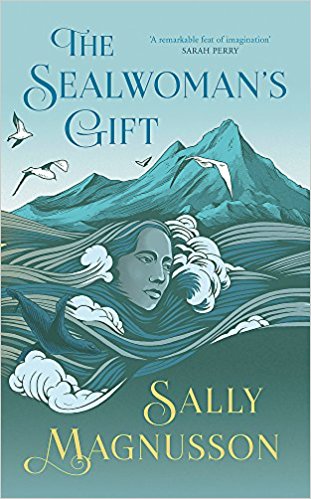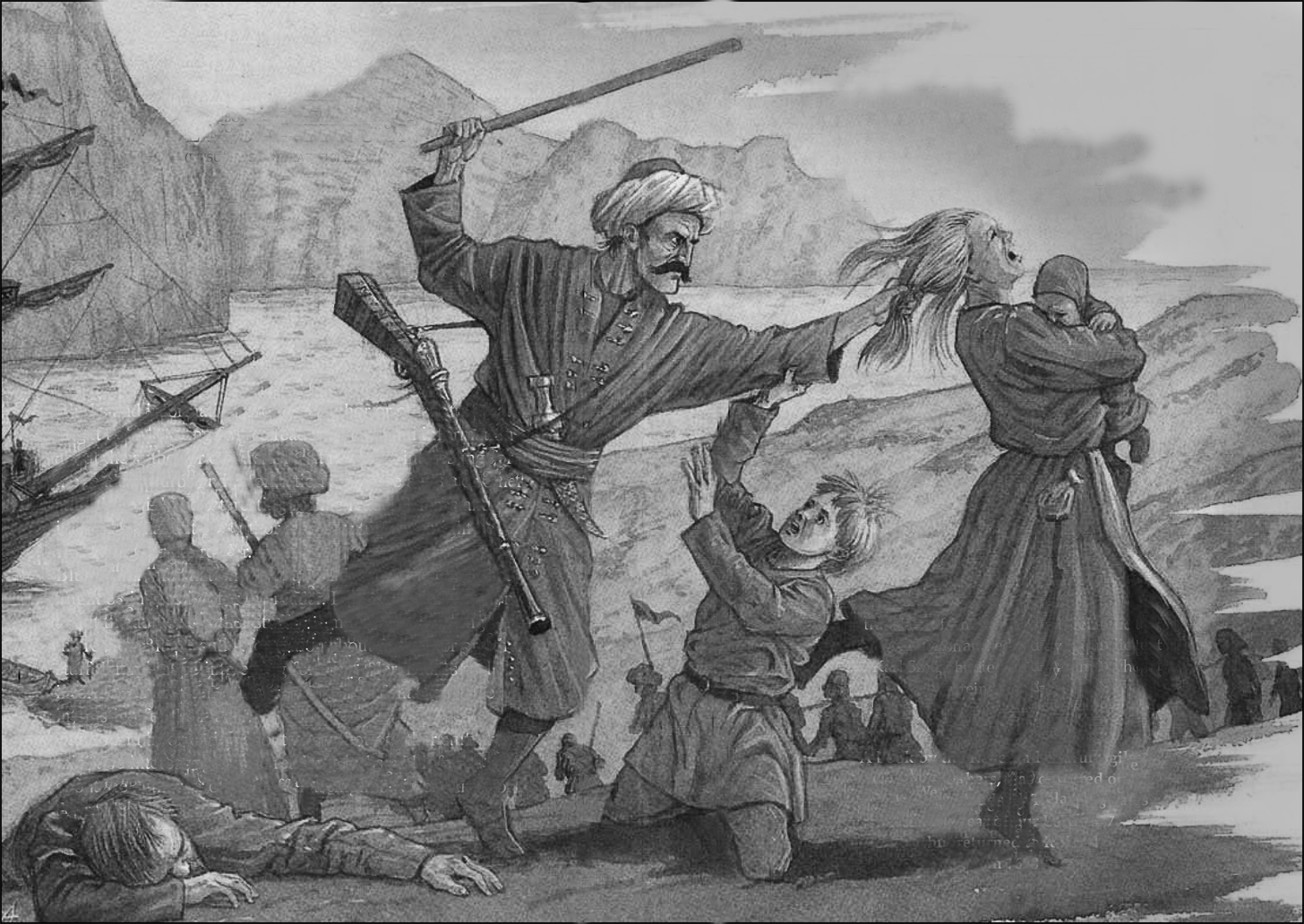In the summer of 1627, Barbary corsairs from North Africa launched what was undoubtedly the most audacious long-distance raid they ever made: they sailed out into the middle of the inhospitable North Atlantic and attacked the coast of Iceland.
There were actually two separate raids that summer: one by a group of corsairs from Salé, on the Atlantic coast of Morocco, the other by a group from Algiers. The Algerians raided along the East Fjords and then attacked Heimaey, one of the Westman Islands off Iceland’s south coast. They murdered several dozen people there and abducted close to 250.
Among the captives taken on Heimaey were Reverend Ólafur Egilsson (pronounced Oh-laver Eh-yill-son), a Lutheran minister in his sixties, his young, pregnant wife, Ásta (pronounced Ow-stah), and their two small children. All the Icelanders taken to Algiers, including Reverend Ólafur’s wife and children, were auctioned off in the Batistan, the slave market. Reverend Ólafur, however, was appointed as a go-between to arrange ransom payments from the King of Denmark (Iceland was a Danish possession at the time).
Forced to leave his family, Reverend Ólafur set out for Denmark, eventually arriving in Copenhagen after six months of arduous travel. There was to be no ransom money for him, though. Denmark had been faring poorly in the Thirty Years’ War, and the royal coffers were too depleted. Reverend Ólafur had to return to Iceland, alone.
It took ten years to collect the necessary funds.
In the end, only thirty-four of the Icelanders enslaved in Algiers were freed. Reverend Ólafur’s wife was among them, though. The couple had three years together before Reverend Ólafur died, at the age of seventy-five, in 1639. They never saw any of their abducted children again.
We know all this because, on his return to Iceland, Reverend Ólafur penned a detailed chronicle of his experiences. There are also contemporary letters and reports about the raid based on eye-witness testimony. In fact, we know a great deal about the events of the 1627 corsair raid and its aftermath, both in Iceland and North Africa.
Everything that was written, however, was written by men.
Nowhere is there anything written about the experiences of the women.
This is what drew Sally Magnasson, a U.K. broadcaster and journalist of mixed Icelandic and Scottish descent, to write The Sealwoman’s Gift, her new novel:
“As a half-Icelander I’ve known for ages about the raid by Algerian corsairs in 1627. It remains one of the most traumatic events in Iceland’s history. But there has never been much known about what happened to the women and children. So I wondered… what might it have been like for a woman to be lifted violently out of her isolated culture and find herself experiencing not just the separations and agonies of captivity, but the reassessments that come in any age when intelligent eyes are opened to other lives, other cultures and other kinds of loving?”
The inspiration for Sally Magnusson’s book came on one of her trips back to Iceland. Wandering the bookshop in the Keflavík airport, waiting for her flight to be called, she stumbled across The Travels of Reverend Ólafur Egilsson, an English translation of Reverend Ólafur’s chronicle edited and translated by me and an Icelandic colleague, Karl Smári Hreinsson. As she puts it:
“The story of The Sealwoman’s Gift is one I’d been turning over in my mind for some time, ever since discovering a short, agonised memoir translated into English as The Travels of Reverend Ólafur Egilsson.”

The Sealwoman’s Gift tells the story of Ásta, Reverend Ólafur’s young wife. Ásta, remember, was pregnant when she was captured. She gave birth on the voyage to Algiers, and then endured a decade of servitude in Algiers before eventually being ransomed and returning to Iceland and her husband. In relating Ásta’s story, Sally Magnasson manages a neat feat of juggling. She has obviously done her homework, and her evocation both of seventeenth century Iceland and of Algiers is historically accurate. She never allows the historical details to dominate the story, though. Instead, as she traces the events of Ásta’s life, she infuses them with a vivid and moving humaness and weaves a compelling narrative of suffering, loss, and eventual redemption.
The Sealwoman’s Gift is an altogether wonderful book. Accurate historical background, a strong story, a gripping read.
What more could you ask?
You can access Sally Magnusson’s website and find out more about the book at the link below:
You can order The Sealwoman’s Gift on
or

Corsairs and Captives
Narratives from the Age of the Barbary Pirates
View Amazon listing
The Travels of Reverend Ólafur Egilsson
The story of the Barbary corsair raid on Iceland in 1627
View Amazon listing
Hi Adam
Wikipedia has this page about turkya gudda https://en.wikipedia.org/wiki/Guðr%C3%ADður_S%C3%ADmonardóttir
who seems to have been quite a female character. According to the wiki page she married an important icelandic figure, the poet and minister, Hallgrímur Pétursson. I wonder if there are any sources about Hallgrímur Pétursson’s ‘reeducation’ of icelandic captives, and if from his poems something can be inferred about her journey.
Do you know of any account of captivity made by a woman?
Best regards
As far as I know, there are no captivity narratives by women until the nineteenth century. However… Steinunn Jóhannesdóttir has written a novel telling the story of ‘Turkish Gudrun’—in Icelandic, titled Reisubók Guðríðar Símonardttur, (The Travel Memoir of Gudrun Simon’s Daughter) which she originally published in 2001. This novel was translated into French last year (L’esclave islandais, Montfort-en-Chalosse: Gaïa Éditions, 2017). And there’s also Sally Magnusson’s The Sealwomans’s Gift (London: Hodder & Stoughton, 2018)), which tells the story of Reverend Ólafur’s wife, Ásta. I ordered a copy of L’esclave islandais some months ago, but I haven’t yet got round to reading it. I have read The Sealwomans’s Gift, though. I thought it was very good.
There’s not a whole lot about Hallgrímur’s ‘re-education’ of the ransomed Icelanders. Mostly, Hallgrímur is simply venerated as one of Iceland’s most beloved psalm poets.